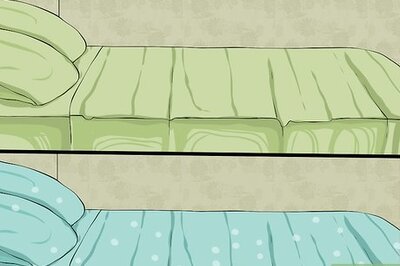
views
India accounts for almost 60% of the overall burden of heart disease despite having less than 20% of the world’s population, according to the Indian Heart Association (IHA). As per data from the American Heart Journal, people in their mid-30s to mid-40s are experiencing a 13% rise in sudden cardiac arrest. The prevalence of Sudden Cardiac Arrest (SCA) in people of a younger age is rising due to the adoption of a sedentary lifestyle, comorbidities like diabetes, increased consumption of alcohol, active and passive smoking, and stress. As some patients may not be able to identify these common risk factors, it becomes necessary to create awareness around SCA among the youth and encourage them to adopt a healthy lifestyle.
Why does cardiac arrest happen?
Sudden cardiac arrest occurs without any indication, bringing the heart to a complete halt. “It happens due to erratic heartbeats triggered by an electrical malfunction that stops the heart from pumping blood to the body. An SCA can lead to the sudden death of a person if medical help is not provided within the first initial few minutes,” says Dr Manjinder Singh Sandhu, Vice Chairman-Cardiology, Paras Hospital, Gurgaon. The heart beats at around 60-100 beats per minute and any variation in this rate, either too slow (called Bradycardia) or too fast (called Tachycardia) is referred to as cardiac arrhythmia. People feeling a sudden increase in heart rate or those who are genetically predisposed to heart diseases can experience fatal arrhythmia.
During each heartbeat, the heart contracts and pushes blood out of the left ventricle which is the heart’s main pumping chamber. Ejection Fraction (EF) is the percentage of blood that is pumped out of the left ventricle with each heartbeat. The EF may be low if the heart muscles have been damaged by a heart attack, heart muscle disease, or a heart valve issue.
The normal EF ranges between 55-75%. “A person may have a substantially increased risk of SCA if their EF goes less than 35%. An ultrasound test called an echocardiogram, which uses sound waves to pass a thin, flexible tube (a catheter) through blood veins in the leg or arm to the heart, is the recommended approach to measure EF,” adds Dr Sandhu.
What are some of the risk factors prevalent in young people?
The term Sudden Cardiac Death (SCD) refers to an unexpected death that occurs within an hour, preceded by fainting at the onset of acute cardiac malfunction. Any individual can encounter it, regardless of whether they have a pre-existing heart condition, but those who have underlying risk factors are more at risk.
Nowadays, several young people and working professionals are worried, attempting to accomplish more in life, and succumbing to peer pressure. Between that, they lose out on their health, be it physical or mental health. This excessively pressured lifestyle causes hormonal changes in the body that are harmful to heart cells, which in turn causes cardiac disorders and deaths from heart disease.
“A person who is in an acutely stressful situation can undergo significant exertion. This exertion can also leave an impact on the heart causing clots to form which may lead to a heart attack,” explains Dr Sandhu. According to IHA, 50% of all heart attacks in Indian men occur under the age of 50, while 25% of all heart attacks in Indian men occur under 40 years of age. An acute heart attack can sometimes also trigger an electrical disturbance as its pumping efficiency becomes weak and blood circulation gets low, resulting in a sudden cardiac arrest. Hence with these rising incidence numbers – getting timely checkups, and proactively managing the heart becomes imperative.
Managing the heart
In cases where patients have survived SCA but are at risk of experiencing them again, an implantable cardioverter-defibrillator (ICD) or cardiac resynchronization therapy (CRT) device may be used to monitor and improve the heartbeat as well as deliver electrical shocks during potentially fatal cardiac arrhythmias to restore the normal heart rate.
To ensure overall cardiovascular health, one must start following healthier lifestyle practices on a day-to-day basis. “A healthy regime includes eating a nutrition-rich balanced diet, exercising regularly, refraining from, and overcoming habits such as smoking and drugs, regulating and limiting alcohol consumption, ensuring adequate sleep cycles, and management of stress,” believes Dr Sandhu. Additionally, one should be aware of any family history and take the appropriate safety precautions. Regular check-ups are essential to diagnose any problems and treat them with the medications and regimens the doctor may advise.
Read all the Latest Lifestyle News and Breaking News here




















Comments
0 comment